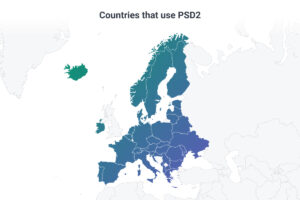
As digital innovations reshape customer expectations around transactions, the payments ecosystem is set for a profound transformation in 2024. Speed, transparency, and integrated mobility characterise the next era of payment experiences – underpinned by ground-breaking developments in contactless technology. Based on emerging advancements within the fintech landscape and shifts in consumer demand and expectation, Traderoot’s Jan Ludik looks at some key trends that will impact the payments industry in 2024.
Contactless Payments Level Up
Contactless “tap-and-go” card payments gained traction during the pandemic, yet still scratch the surface when we consider the number of purchases globally that still occur in-person.
The proliferation of near field communication (NFC), radio frequency identification (RFID) and innovative near proximity visibility (NPV) sensors in payment devices, retail terminals and vending machines will drive exponential growth in contactless adoption by consumers and merchants through the year.
Frictionless Yet Secure: Authenticating Contactless Payments
As contactless tap-and-go use cases spread, ensuring the security of transactions is becoming even more crucial. But adding authentication steps ruins the user experience and consumer demand for speed and convenience.
The solution? Built-in biometrics. Fingerprint, face and iris scanning sensors are already becoming ubiquitous in mobile devices and, as a result, mobile payments and banking platforms. Looking forward, this technology is likely to begin being utilised in payment cards and POS devices, enabling seamless verified user authentication at the point of sale.
“This will preserve the convenience of frictionless taps without compromising security,” says Traderoot CEO, Jan Ludik.
The Mobile Wallet Renaissance
Since Apple Pay and Google Pay launched nearly a decade ago, the adoption of mobile wallet payments stalled, failing to reach the ubiquity predicted. However, in 2024, fundamentals align perfectly for mass mobile wallet adoption.
“Our data is showing that more daily transactions are shifting to contactless,” says Ludik, “suggesting that customers are beginning to habituate tap-to-pay from phones.”
Meanwhile, wallet providers, merchants, PSPS, banks and other industry stakeholders are beginning to collaborate at a deeper strategic level to enhance integration and provide attractive rewards for usage.
“The move to open banking is influencing philosophies in the payments sector,” says Ludik, “and we are seeing more of our clients embracing API-based solutions to enable integration.”
Wearables and Accessories as Payment Catalysts
Another aspect driving the adoption of contactless mobile wallet use is the emergence and adoption of payment-enabled wearables and fashion accessories.
“These devices have already had a profound impact in bypassing many adoption hurdles,” explains Ludik. “Smartwatches, rings, bracelets and other devices seamlessly sync to bank accounts and integrate with digital wallets and virtual cards, enabling contactless transactions to happen effortlessly and often unexpectedly by simply passing applicable terminals or sensors. Think about the impact this can have on public transport, retail and other sectors where we no longer have to queue at a bottleneck till-point.”
Through 2024 and beyond, the normalisation of the concept of “passive” payments will build habits that benefit broader mobile wallet usage and contactless payments, and deliver bigger revenues for PSPs and merchants that embrace this opportunity.
The Crypto and CBDC Contactless Future
Blockchain delivers the backend rails for scalable, secure digital transactions, while contactless devices offer a seamless physical interface. The combination of these two technologies is likely to bridge the gap between crypto or Central Bank Digital Coins (CBDCs) and real world usage. Spurring mainstream traction, integrated biometric sensors are likely to erase security concerns around direct P2P crypto transfers via QR codes. Meanwhile, contactless national ID systems synced to government CBDCs could introduce new embedded or automated payment event triggers based on credentials or past transactions.
“Through 2024, we expect to see greater adoption of crypto payment on- and off-ramps,” says Ludik, “as well as the emergence of more stablecoins, CBDCs, and blockchain-powered payment rails.”
Essentially “invisible” contactless experiences represent the ultimate convenience prizes for payments. Collaboration across fintech stakeholders to deploy elegant, intuitive front-end solutions with progressively advanced backend payment rails will prove imperative to maximise frictionless payments’ full disruptive potential by 2025.
The tools exist to shape the next era of payments,” says Ludik, “but implementing responsibly will pose the biggest challenge to both incumbent providers and emerging disruptors.”
As we stride into this transformative era of payments, the fusion of innovation and responsibility will be the hallmark of success. Navigating the landscape with foresight, collaboration, and a commitment to security will be essential for both established players and up-and-coming disruptors. As we harness the tools at our disposal, let us remember that the ultimate goal is to enhance the lives of consumers while driving the evolution of commerce. Together, we hold the power to shape a future where seamless, secure, and inclusive payment experiences are the new norm.
- SEO Powered Content & PR Distribution. Get Amplified Today.
- PlatoData.Network Vertical Generative Ai. Empower Yourself. Access Here.
- PlatoAiStream. Web3 Intelligence. Knowledge Amplified. Access Here.
- PlatoESG. Carbon, CleanTech, Energy, Environment, Solar, Waste Management. Access Here.
- PlatoHealth. Biotech and Clinical Trials Intelligence. Access Here.
- Source: https://www.finextra.com/blogposting/25724/contactless-convenience-a-look-at-the-trends-shaping-the-payments-industry-in-2024?utm_medium=rssfinextra&utm_source=finextrablogs
- :is
- :where
- 2024
- 2025
- a
- About
- accessories
- Accounts
- across
- adding
- Adoption
- advanced
- advancements
- ago
- align
- already
- and
- Apple
- Apple Pay
- applicable
- ARE
- around
- AS
- aspect
- At
- attractive
- Authentication
- Automated
- Backend
- Bank
- bank accounts
- Banking
- Banks
- based
- BE
- becoming
- begin
- Beginning
- being
- benefit
- between
- Beyond
- bigger
- Biggest
- biometric
- biometrics
- blockchain-powered
- both
- bottleneck
- BRIDGE
- broader
- build
- built-in
- but
- by
- CAN
- card
- card payments
- Cards
- cases
- CBDC
- CBDCs
- central
- Central Bank
- ceo
- challenge
- clients
- codes
- Coins
- collaborate
- collaboration
- combination
- Commerce
- commitment
- Communication
- compromising
- concept
- Concerns
- Consider
- consumer
- Consumers
- Contactless
- contactless payments
- convenience
- could
- Credentials
- crucial
- crypto
- crypto payment
- customer
- customer expectations
- Customers
- daily
- daily transactions
- data
- decade
- deeper
- deliver
- delivers
- Demand
- deploy
- developments
- Devices
- digital
- Digital Coins
- digital transactions
- digital wallets
- direct
- disposal
- disruptive
- Disruptors
- drive
- driving
- during
- ecosystem
- effortlessly
- embedded
- embrace
- embracing
- emergence
- emerging
- enable
- enabling
- enhance
- ensuring
- Era
- essential
- established
- Even
- Event
- evolution
- exist
- expect
- expectation
- expectations
- experience
- Experiences
- Explains
- exponential
- Exponential Growth
- Face
- failing
- Fashion
- field
- Finextra
- fingerprint
- fintech
- For
- foresight
- Forward
- Frequency
- frictionless
- from
- full
- Fundamentals
- fusion
- future
- gained
- gap
- Globally
- goal
- Google Pay
- Government
- greater
- ground-breaking
- Growth
- habits
- had
- happen
- harness
- Have
- hold
- However
- HTTPS
- Hurdles
- ID
- Identification
- Impact
- imperative
- implementing
- in
- in-person
- Inclusive
- Incumbent
- industry
- influencing
- Innovation
- innovations
- innovative
- integrate
- integrated
- integration
- Interface
- into
- introduce
- intuitive
- iris scanning
- Jan
- Key
- landscape
- launched
- let
- Level
- likely
- Lives
- longer
- Look
- looking
- LOOKS
- Machines
- Mainstream
- many
- Mass
- maximise
- Meanwhile
- Merchants
- Mobile
- mobile devices
- mobile payments
- Mobile Wallet
- mobility
- more
- move
- National
- navigating
- Near
- nearly
- New
- next
- NFC
- no
- number
- occur
- of
- offer
- often
- on
- open
- open banking
- Opportunity
- or
- Other
- our
- p2p
- P2P Crypto
- pandemic
- Passing
- past
- Pay
- payment
- payments
- Payments and Banking
- perfectly
- philosophies
- phones
- physical
- Platforms
- plato
- Plato Data Intelligence
- PlatoData
- players
- Point
- PoS
- pose
- potential
- power
- predicted
- prizes
- profound
- progressively
- Prove
- provide
- providers
- PSPs
- public
- purchases
- qr-codes
- Radio
- rails
- reach
- real
- real world
- remember
- represent
- reshape
- responsibility
- responsibly
- result
- retail
- revenues
- Rewards
- RUINS
- sale
- says
- scalable
- scanning
- scratch
- seamless
- seamlessly
- sector
- Sectors
- secure
- security
- see
- seeing
- sensors
- set
- Shape
- shaping
- SHIFTING
- Shifts
- showing
- simply
- solution
- Solutions
- some
- speed
- spread
- Stablecoins
- stakeholders
- Steps
- Still
- Strategic
- stride
- success
- Surface
- sync.
- Systems
- Taps
- Technologies
- Technology
- terminals
- that
- The
- The Landscape
- These
- think
- this
- Through
- to
- together
- tools
- traction
- Transactions
- transfers
- Transformation
- transformative
- Transparency
- transport
- Trends
- two
- ubiquitous
- ultimate
- underpinned
- us
- Usage
- use
- User
- User Experience
- verified
- via
- Virtual
- virtual cards
- visibility
- Wallet
- Wallets
- we
- wearables
- WELL
- when
- while
- will
- with
- within
- without
- world
- year
- yet
- zephyrnet













